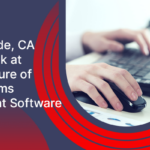How Claim Management Companies Can Enhance Their Practices
October 18, 2024
In the ever-changing world of insurance and financial services, claims processing is crucial to gauging customer satisfaction and operational efficiency. The traditional ways of managing claims were time-consuming and susceptible to errors because they were done manually. But now, with modern claims processing software, things have changed a lot. This new era is about making things faster and more accurate, which is a big deal when managing claims.
The Need for Transformation in Claims Processing Software
Claims processing was previously linked with hard paperwork, manual data input, and lengthy client wait times. As organizations confronted issues in satisfying consumer expectations, regulatory compliance, and cost-effectiveness, the need for transformation became evident. Enter next-generation claims processing software, a technological leap that promises to alleviate these issues while also redefining how insurance and financial institutions manage claims.
Automation as the Catalyst
At the heart of this transformation lies automation, a key catalyst for efficiency improvement in claims processing. Automation in claims processing software involves the use of advanced technologies such as artificial intelligence (AI), machine learning (ML), and robotic process automation (RPA) to streamline and automate various stages of the claims lifecycle.
1. Data Extraction and Entry
One of the initial pain points in traditional claims processing is the manual entry of data from multiple sources. Next-gen software employs advanced OCR (Optical Character Recognition) and natural language processing algorithms to extract relevant information from documents, emails, and other sources. This not only reduces the chances of human error but also significantly accelerates the entire claims process.
2. Fraud Detection
Automated claims processing software comes equipped with sophisticated fraud detection algorithms that can analyze patterns and anomalies in claims data. This proactive approach helps identify potentially fraudulent claims early in the process, minimizing financial losses for insurance companies and ensuring a fair and prompt settlement for legitimate claims.
3. Decision Support Systems
Machine learning algorithms enable claims processing software to learn from historical data and make informed decisions. These decision support systems assist claims adjusters in evaluating claims more efficiently, ensuring that each claim is processed accurately and in compliance with regulatory requirements.
4. Customer Communication and Self-Service Portals
Next-gen claims processing software doesn’t just streamline processes internally; it also enhances the customer experience. Automated communication systems keep customers informed about the status of their claims, reducing uncertainty and improving overall satisfaction. Additionally, self-service portals empower customers to submit and track claims online, promoting transparency and efficiency.
The Impact on Operational Efficiency
The implementation of next-gen claims processing software brings about a paradigm shift in operational efficiency for insurance and financial institutions. Here’s how:
1. Faster Claim Processing
Automation significantly reduces the time required to process claims. Tasks that previously took days or weeks can now be completed in a matter of hours or even minutes. This not only accelerates the claims settlement process but also allows companies to handle a larger volume of claims without compromising on accuracy.
2. Resource Optimization
With routine and repetitive tasks automated, claims adjusters and other personnel can focus on more complex and value-added activities. This leads to better resource allocation, improved job satisfaction, and a more efficient workforce.
3. Cost Reduction
By automating manual tasks and minimizing the risk of errors, next-gen claims processing software contributes to cost reduction. The savings come from decreased operational costs, lower error-related expenses, and a reduction in fraudulent claims payouts.
Challenges and Considerations
While the benefits of next-gen claims processing software are evident, it’s essential to acknowledge the challenges and considerations associated with its implementation.
1. Integration with Existing Systems
Integrating new software with existing legacy systems can be a complex task. Ensuring seamless communication between different components of the claims processing ecosystem is crucial to maximizing the benefits of automation.
2. Data Security and Privacy
Handling sensitive customer data requires robust security measures. Insurance companies must prioritize data security and compliance with regulations to build trust with their customers and avoid legal repercussions.
3. Employee Training and Adoption
The successful implementation of next-gen claims processing software depends on the proficiency of the workforce. Adequate training and change management strategies are essential to ensure that employees adapt to the new technology seamlessly.
The Future of Claims Processing: A Collaborative Approach
The development of claims processing software represents a significant and disruptive change in the insurance and financial services industry. However, it is essential to see this technological advancement as an additional tool that enhances human skill rather than completely replacing it.
The future of claims processing relies on a collaborative framework that combines human intelligence with technological efficiency. Automation functions as a potent ally for claims adjusters, allowing them to efficiently navigate through mundane chores. As a result, this frees up their time and energy to focus on the detailed and complex aspects of assessing claims, while also promoting meaningful relationships with clients.
By using automation, claims adjusters can simplify boring and time-consuming operations, like data input and document processing. This not only accelerates the overall timeframe for processing claims but also reduces the probability of mistakes. The collaborative method guarantees a prudent allocation of duties, where robots handle repetitive jobs accurately, while human specialists contribute their nuanced comprehension, empathy, and critical thinking to more complex areas of the claims evaluation.
Furthermore, the joint synergy goes beyond the internal activities of insurance businesses. It includes a wider range of elements, such as policyholders, regulatory organizations, and other individuals or groups with an interest in the matter. Technology enables the seamless exchange of information and promotes open communication, resulting in enhanced decision-making based on comprehensive knowledge. Although automation enhances productivity, jobs that require emotional intelligence, ethical deliberation, and sophisticated comprehension of consumer requirements still need the involvement of human expertise.
Conclusion
The use of automation in next-generation claims processing software is revolutionizing the insurance and financial services industry by enhancing efficiency. Organizations are being driven towards a more competitive and customer-centric future by the capacity to expedite claims processing, maximize resources, and save costs. Although there are obstacles, the advantages far surpass the early difficulties. In this age of digital transformation, the cooperation between human knowledge and technical capabilities has the potential for a future where claims processing is both efficient and customer-centric, while also demonstrating empathy.
7 Features Every Online Claim Management System Needs
June 27, 2024What to Look for in Claims Management Software?
May 8, 2024









